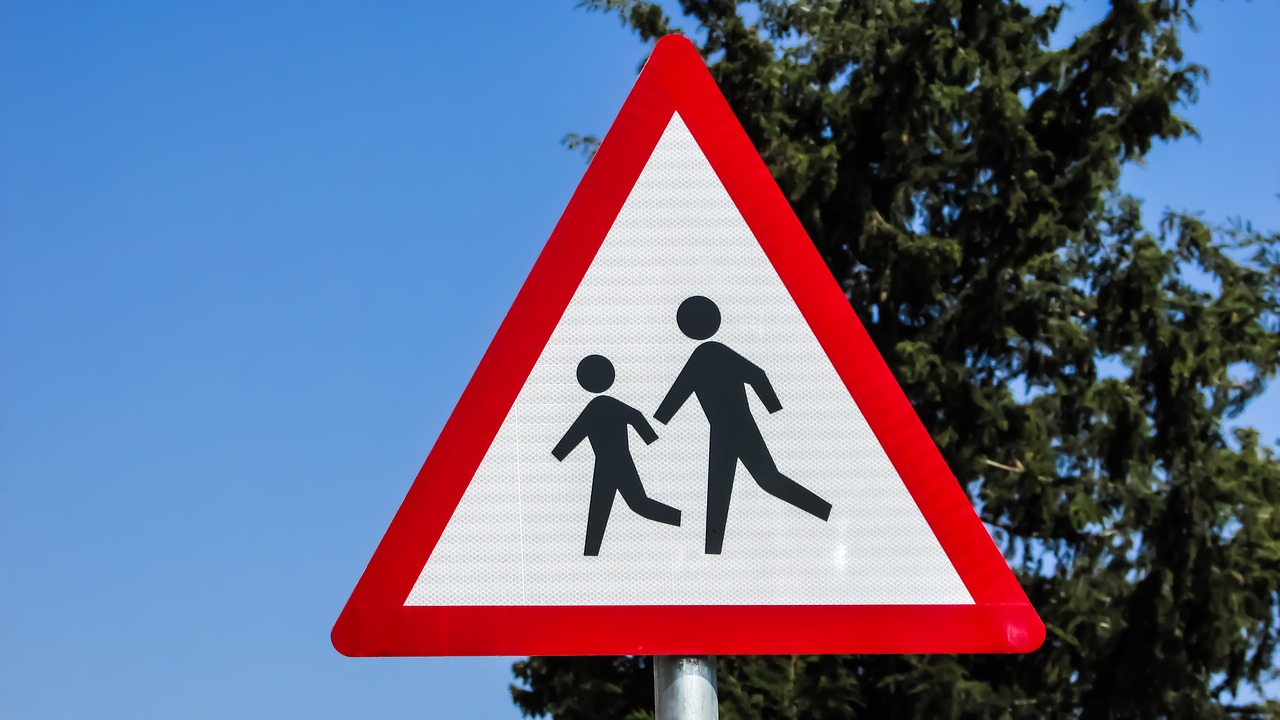Decoding the Influence of Human Behavior on Safety
In today's world, safety is not just a set of rules or procedures; it is a complex interplay of human behavior, environmental factors, and psychological elements. When we think about safety, we often envision hard hats, safety signs, and regulations, but the real game-changer lies in understanding how people think and act in various situations. Have you ever wondered why some individuals consistently follow safety protocols while others take unnecessary risks? This article explores the profound impact of human behavior on safety across different contexts, emphasizing the importance of grasping psychological factors to enhance safety measures and prevent accidents.
At the heart of this exploration is the recognition that safety is not merely about compliance; it's about creating a culture where individuals feel empowered to prioritize their well-being and that of others. Imagine a workplace where every employee actively participates in safety discussions, sharing insights and experiences. Such environments foster a sense of responsibility and community, ultimately leading to fewer accidents and injuries. But how do we cultivate this mindset? It begins with understanding the psychology of risk perception.
Risk perception is the lens through which individuals view potential dangers. It's shaped by a myriad of factors, including personal experiences, cultural influences, and even emotional responses. For instance, someone who has witnessed a workplace accident may develop a heightened sense of caution, while another individual might underestimate risks due to overconfidence. This variation in risk perception can lead to inconsistent safety behaviors, making it crucial for organizations to address these psychological aspects in their safety protocols.
To effectively mitigate risks, organizations must implement behavioral safety programs. These programs focus on changing unsafe behaviors by fostering awareness and providing targeted training. The key to success lies in understanding the principles that underpin these programs, such as the importance of continuous learning and the need for engaging training materials. After all, if training is dull and uninspiring, how can we expect individuals to internalize safety practices?
Moreover, workplace culture plays a pivotal role in shaping safety behaviors. A positive safety culture encourages open communication, where employees feel safe to voice concerns and share suggestions. This can be likened to a garden; when nurtured properly, it flourishes, yielding a rich harvest of safety practices. In contrast, a toxic culture can stifle growth, leading to negligence and accidents. Therefore, fostering a supportive environment is essential for promoting safe behaviors.
In the realm of communication, clarity is paramount. Effective communication not only promotes safety awareness but also ensures that safety practices are understood and followed. This is where technology comes into play. Utilizing modern tools and platforms can streamline safety communication, making it easier for organizations to relay important information in real-time. Imagine receiving instant notifications about safety protocols or updates on potential hazards—technology can make this a reality.
Lastly, feedback mechanisms are vital for continuous improvement. Organizations should actively seek input from employees regarding safety practices. This two-way communication fosters a sense of ownership and accountability among staff, leading to enhanced safety measures. By acting on feedback, organizations can adapt their practices to better suit the needs of their workforce, ultimately creating a safer environment for everyone.
- What is the importance of understanding human behavior in safety?
Understanding human behavior helps organizations tailor their safety protocols to address psychological factors, leading to more effective safety measures. - How do behavioral safety programs work?
Behavioral safety programs aim to change unsafe behaviors through training, awareness, and fostering a positive safety culture. - Why is workplace culture essential for safety?
A positive workplace culture encourages open communication and accountability, which are critical for promoting safe behaviors among employees. - How can technology improve safety communication?
Technology can facilitate real-time communication about safety concerns, ensuring that all employees are informed and aware of potential hazards. - What role does feedback play in safety practices?
Feedback helps organizations adapt and improve their safety practices based on employee insights, fostering a culture of continuous improvement.

The Psychology of Risk Perception
Understanding how individuals perceive risk is crucial for improving safety protocols. Our perception of risk is not just a straightforward assessment of danger; it is a complex interplay of cognitive biases and emotional factors. Think about it: have you ever felt a rush of anxiety when driving through a storm, even if you’ve done it a million times before? That’s your brain’s way of weighing the perceived risks against your past experiences. This section delves into these psychological nuances that shape our risk assessments and ultimately impact safety.
One of the key elements in risk perception is cognitive bias. This refers to the systematic patterns of deviation from norm or rationality in judgment. For example, the availability heuristic plays a significant role in how we evaluate risks. When we hear about a plane crash on the news, we might overestimate the danger of flying because that event is fresh in our minds. It’s like being afraid of sharks after watching a documentary, even though the odds of encountering one are astronomically low!
Moreover, our emotions can cloud our judgment. When we feel fear, our brains tend to amplify the perceived risks, making us more cautious than necessary. Conversely, feelings of confidence can lead us to underestimate risks. This emotional rollercoaster can create a dangerous disconnect between actual risk and perceived risk, leading to unsafe behaviors. For instance, a construction worker might feel invincible after a few successful days on the job and disregard safety protocols, thinking, “Nothing will happen to me!” This mindset can have dire consequences.
Another fascinating aspect of risk perception is the role of social influences. People often look to others when assessing risks. If a colleague seems unfazed by a hazardous situation, you might feel less inclined to worry. This phenomenon is known as social proof, and it can lead to a culture of complacency in workplaces. It’s essential to recognize that just because others are behaving a certain way doesn’t mean it’s safe. This is where education and training come into play, reinforcing the idea that safety should never be compromised, regardless of peer behavior.
To illustrate these concepts, let’s take a look at a simple table that summarizes some common cognitive biases affecting risk perception:
| Cognitive Bias | Description |
|---|---|
| Availability Heuristic | Overestimating the likelihood of events based on recent memory or exposure. |
| Optimism Bias | Believing that negative events are less likely to happen to oneself compared to others. |
| Social Proof | Following the behavior of others in uncertain situations, regardless of safety. |
| Anchoring | Relying too heavily on the first piece of information encountered when making decisions. |
Understanding these psychological factors is vital for organizations aiming to enhance their safety measures. By addressing cognitive biases and emotional responses, companies can develop more effective safety protocols that resonate with employees. This isn’t just about rules and regulations; it’s about fostering a mindset that prioritizes safety above all else. So, the next time you evaluate a risk, ask yourself: Are your perceptions influenced by biases or emotions? Recognizing these influences is the first step toward creating a safer environment for everyone.
- What is risk perception? Risk perception is how individuals evaluate the likelihood and severity of potential hazards, influenced by cognitive biases and emotions.
- How do cognitive biases affect safety? Cognitive biases can distort our understanding of risks, leading to overestimations or underestimations of danger.
- Why is understanding risk perception important for safety? By understanding how people perceive risk, organizations can tailor safety training and protocols to address misconceptions and enhance safety compliance.

Behavioral Safety Programs
When it comes to creating a safe environment, are like the secret sauce that can transform the way individuals approach safety in various settings. These programs are designed to shift the focus from traditional safety measures, which often emphasize rules and regulations, to a more holistic view that considers the human element in safety practices. By understanding how people think and act, organizations can implement strategies that not only reduce accidents but also foster a culture of safety.
At the heart of any successful behavioral safety program is the concept of changing unsafe behaviors. This involves not just telling employees what to do but engaging them in a way that makes them want to embrace safe practices. Imagine trying to teach a child to ride a bike; if you only shout instructions, they might feel overwhelmed. However, if you guide them, support them, and celebrate their progress, they’re more likely to succeed. Similarly, behavioral safety programs thrive on positive reinforcement and active participation.
To effectively change behaviors, these programs often incorporate a variety of strategies, including:
- Training and Awareness: Regular training sessions help employees understand the importance of safety and how their actions impact themselves and their colleagues.
- Observation and Feedback: By observing behaviors in real-time and providing constructive feedback, organizations can encourage safe practices while discouraging unsafe ones.
- Incentives: Rewarding safe behaviors can motivate employees to prioritize safety in their daily tasks.
One of the most powerful aspects of behavioral safety programs is their ability to create a feedback loop. This means that organizations not only implement strategies but also continuously assess their effectiveness. For instance, if a particular training module isn't yielding the desired results, it can be adjusted based on employee feedback and observed behaviors. This adaptability is crucial for maintaining a culture of safety that evolves with the workforce.
Moreover, the success of these programs heavily relies on the involvement of all employees, from the top management to the newest hire. When everyone is on board, the message of safety becomes ingrained in the workplace culture. It’s like building a house; if the foundation is weak, the entire structure is at risk. Similarly, a strong safety culture is built on the collective commitment of all individuals within the organization.
In conclusion, behavioral safety programs are not just about compliance; they are about creating an environment where safety is a shared value. By focusing on the behaviors that lead to accidents and addressing them through engaging training, observation, and a supportive culture, organizations can significantly enhance their safety outcomes. The journey towards a safer workplace is ongoing, but with the right behavioral safety programs in place, it becomes a shared adventure.

The Role of Training and Education
Training and education are the backbone of any effective safety program. Imagine trying to navigate a maze without a map; that's what it feels like for employees who lack proper training in safety protocols. When organizations invest in comprehensive training, they equip their workforce with the knowledge and skills necessary to identify hazards and mitigate risks. This not only enhances individual safety but also contributes to a collective culture of safety within the organization.
One of the key aspects of training is its ability to address cognitive biases that can lead to unsafe behaviors. For instance, many individuals tend to underestimate risks in familiar environments, believing that accidents are less likely to happen to them. Through targeted education, employees can learn to recognize these biases and adjust their behaviors accordingly. This is where effective training programs shine—they provide real-world scenarios and simulations that challenge existing perceptions and encourage proactive safety measures.
Moreover, continuous learning is essential in a world where safety standards and technologies are constantly evolving. Organizations should foster an environment where ongoing education is encouraged. This could include regular workshops, refresher courses, and even informal lunch-and-learn sessions where employees can share insights and experiences. By creating a culture of continuous improvement, organizations not only keep their safety practices up-to-date but also empower employees to take ownership of their safety responsibilities.
To illustrate the impact of training and education on safety, consider the following table that highlights various training methods and their effectiveness:
| Training Method | Description | Effectiveness |
|---|---|---|
| On-the-Job Training | Hands-on training conducted in the actual work environment. | High |
| Simulation Training | Use of virtual reality or simulated environments to practice safety procedures. | Very High |
| Classroom Training | Traditional learning setting with lectures and discussions. | Moderate |
| Online Courses | Flexible learning through digital platforms, often self-paced. | High |
As we can see, different training methods offer varying levels of effectiveness, but the key takeaway is that a combination of these approaches often yields the best results. Engaging employees through varied training formats keeps them interested and helps them retain the information better.
In conclusion, the role of training and education in promoting safe behaviors cannot be overstated. It is not just about ticking boxes or fulfilling compliance requirements; it's about nurturing a mindset that prioritizes safety at every level. When employees feel confident in their ability to manage risks, they are more likely to adhere to safety protocols, ultimately leading to a safer workplace for everyone.
- What is the most effective training method for safety? The effectiveness of training methods can vary, but on-the-job training and simulation training often yield high results due to their practical applications.
- How often should safety training be conducted? Regular training sessions should be held, ideally at least once a year, with refresher courses or updates whenever new procedures or technologies are introduced.
- Can technology improve safety training? Absolutely! Technology can enhance training through interactive simulations, online courses, and real-time communication tools that keep employees engaged and informed.

Creating Engaging Training Materials
When it comes to safety training, the materials used can make or break the learning experience. Think about it: if the content is dull or overly complicated, how much do you think participants will retain? Engaging training materials are crucial for capturing attention and ensuring that the information sticks. So, what does it take to create materials that not only inform but also inspire? Let's dive into some effective strategies!
First and foremost, it's essential to understand your audience. Tailoring your materials to their specific needs, interests, and learning styles is key. For instance, if you're training a group of younger employees, incorporating interactive elements like quizzes, videos, and gamified scenarios can boost engagement. On the other hand, seasoned professionals might appreciate case studies or real-life examples that resonate with their experiences. The goal is to make the training feel relevant and applicable.
Visual aids are another powerful tool in your training arsenal. Humans are visual creatures, and studies show that we process images much faster than text. Incorporating graphics, charts, and infographics can help convey complex information in a digestible format. For example, a well-designed infographic summarizing safety protocols can be far more effective than a lengthy paragraph. Consider using
| Type of Visual Aid | Benefits |
|---|---|
| Infographics | Condenses information; visually appealing |
| Videos | Demonstrates procedures in real-time; engages multiple senses |
| Interactive Quizzes | Reinforces learning; provides immediate feedback |
Moreover, storytelling can be a game-changer in training materials. People love stories; they connect emotionally and remember them better. By weaving safety protocols into a narrative, you can illustrate the consequences of unsafe behaviors and the benefits of following safety practices. Imagine a video that tells the story of an employee who ignored safety guidelines and faced dire consequences. This approach not only educates but also resonates on a personal level, making the training experience memorable.
Lastly, don’t forget to solicit feedback on your training materials. After all, the best way to improve is to understand what works and what doesn’t. Consider conducting brief surveys or focus groups after training sessions to gather insights from participants. This feedback can guide you in refining your materials, ensuring they remain engaging and effective. Remember, training is not a one-and-done deal; it’s an ongoing process that requires continuous adaptation and improvement.
- What are the key elements of engaging training materials? Engaging training materials should be relevant, visually appealing, interactive, and incorporate storytelling.
- How can I assess the effectiveness of my training materials? Gather feedback through surveys and focus groups after training sessions to understand participants' experiences and areas for improvement.
- Why is storytelling important in training? Storytelling helps create an emotional connection, making the information more relatable and memorable for participants.

Measuring Training Effectiveness
When it comes to ensuring that training programs are truly effective, simply conducting a session and moving on is not enough. is a critical step that allows organizations to understand the impact of their training initiatives on employee behavior and overall safety. It’s like trying to navigate a ship without a compass—you might be moving, but are you heading in the right direction?
To effectively measure the outcomes of training, organizations can employ various methods, each providing valuable insights into different aspects of the training process. One popular approach is the Kirkpatrick Model, which evaluates training effectiveness across four levels:
| Level | Description |
|---|---|
| 1. Reaction | Measures how participants felt about the training (e.g., satisfaction surveys). |
| 2. Learning | Assesses the increase in knowledge or skills post-training (e.g., tests, quizzes). |
| 3. Behavior | Evaluates the transfer of learning to the workplace (e.g., observations, performance metrics). |
| 4. Results | Measures the final results of training on organizational goals (e.g., accident rates, productivity). |
Using this model, organizations can gain a comprehensive understanding of how their training programs are performing. For instance, if employees report high satisfaction (Level 1), but their on-the-job behavior hasn’t changed (Level 3), it might indicate that while the training was enjoyable, it didn’t resonate with practical applications. This feedback loop is essential for continuous improvement.
Another effective method for measuring training effectiveness is through pre-and post-training assessments. By evaluating participants before and after the training, organizations can directly measure knowledge gains and skill enhancements. This approach not only highlights areas of improvement but also reinforces the importance of continuous learning.
Additionally, organizations should consider implementing follow-up surveys or interviews several weeks after the training. This helps to ascertain whether the training has had a lasting impact on behavior and safety practices. It’s like planting a seed; you need to check back to see if it has grown into a strong plant or if it needs more nurturing.
Lastly, it’s crucial to create a culture of feedback. Encouraging employees to share their experiences and suggestions regarding training can provide invaluable insights. This can be facilitated through regular check-ins, suggestion boxes, or even informal discussions during team meetings. The more open the communication, the better the training can evolve to meet the needs of the workforce.
In conclusion, measuring training effectiveness is not just a checkbox on a list; it’s a dynamic process that requires ongoing attention and adaptation. By employing structured evaluation methods, organizations can ensure that their training programs not only educate but also empower employees to prioritize safety in their daily tasks.
- Why is measuring training effectiveness important? It helps organizations understand the impact of training on employee behavior and safety, ensuring resources are used effectively.
- What methods can be used to measure training effectiveness? Common methods include the Kirkpatrick Model, pre-and post-training assessments, and follow-up surveys.
- How often should training effectiveness be measured? Regularly, ideally after each training session and through ongoing assessments to ensure continuous improvement.
- Can feedback from employees influence training programs? Absolutely! Employee feedback is crucial for refining training content and delivery, making it more relevant and effective.

The Influence of Workplace Culture
Workplace culture is like the air we breathe in an organization; it shapes how employees interact, make decisions, and approach safety. Just as clean air promotes health, a positive workplace culture fosters a sense of security and responsibility among employees. But what exactly does this mean for safety practices? Well, when employees feel valued and supported, they are more likely to engage in safe behaviors and take the initiative to report unsafe conditions.
Think about it: when people work in a culture that prioritizes safety, they’re not just following rules; they're embracing a mindset. This mindset encourages them to look out for one another, creating a ripple effect that enhances overall safety. For instance, consider a company that celebrates safety milestones and recognizes employees who demonstrate safe practices. This kind of recognition can transform safety from a mere compliance issue into a source of pride.
However, the opposite is also true. In a toxic workplace culture, where employees fear repercussions for speaking up, safety can take a back seat. Employees might avoid reporting hazards or unsafe practices, leading to an increase in accidents. Therefore, it's essential for organizations to actively cultivate a culture of safety by:
- Encouraging open communication about safety concerns.
- Providing regular safety training and resources.
- Recognizing and rewarding safe behaviors.
- Involving employees in safety decision-making processes.
Moreover, leadership plays a crucial role in setting the tone for workplace culture. When leaders prioritize safety and model safe behaviors, employees are more likely to follow suit. This can be illustrated through a simple table:
| Leadership Actions | Employee Responses |
|---|---|
| Regular safety meetings | Increased awareness and participation in safety protocols |
| Open-door policy for reporting hazards | Higher rates of hazard reporting |
| Recognition of safe behaviors | Motivation to maintain and promote safe practices |
In conclusion, the influence of workplace culture on safety cannot be overstated. By fostering an environment where safety is a shared value, organizations can significantly reduce the likelihood of accidents and injuries. It’s not just about enforcing rules; it’s about creating a community that genuinely cares for the well-being of its members. So, ask yourself: what kind of culture does your workplace have, and how can you contribute to making it safer?
- What is workplace culture? Workplace culture refers to the shared values, beliefs, and behaviors that shape how work gets done within an organization.
- How can I influence workplace culture? You can influence workplace culture by promoting positive interactions, advocating for safety, and leading by example.
- Why is safety culture important? A strong safety culture reduces the risk of accidents, enhances employee morale, and improves overall productivity.

Communication and Safety Awareness
Effective communication is the cornerstone of promoting safety awareness in any environment, whether it's a bustling construction site, a busy office, or a healthcare facility. When it comes to safety, clarity is key. Think about it: if instructions are vague or difficult to understand, how can anyone be expected to follow them? It's like trying to navigate a maze without a map—frustrating and potentially dangerous. Therefore, organizations must prioritize clear messaging to ensure that safety practices are not only understood but also embraced by all employees.
One of the most significant challenges in safety communication is overcoming the noise of daily operations. Employees are often inundated with information, making it easy for crucial safety messages to get lost in the shuffle. To combat this, organizations can utilize various communication strategies that stand out and resonate with their workforce. For instance, incorporating visual aids such as infographics, posters, and videos can enhance understanding and retention of safety protocols. After all, a picture is worth a thousand words, and a well-designed infographic can convey complex safety information in a digestible format.
Moreover, feedback plays a critical role in ensuring that safety messages are not only received but acted upon. It's essential to create an environment where employees feel comfortable sharing their thoughts and concerns regarding safety practices. Regularly soliciting feedback through surveys or informal discussions can provide valuable insights into how safety information is being perceived and whether any adjustments are necessary. This two-way communication fosters a culture of safety where everyone feels responsible for maintaining a safe work environment.
In addition, leveraging technology can significantly enhance safety communication efforts. With the rise of digital platforms, organizations can utilize tools such as instant messaging apps, safety management software, and even social media to disseminate safety information in real-time. Imagine receiving an immediate alert about a potential hazard right on your smartphone—this instant communication can be the difference between a safe workday and a preventable accident. Organizations that embrace technology not only improve their safety communication but also engage employees in a more dynamic and interactive way.
To sum it up, effective communication and safety awareness go hand in hand. Organizations that prioritize clear messaging, foster feedback, and utilize technology will likely see a significant improvement in their safety culture. As we delve deeper into the nuances of safety communication, it's crucial to remember that every employee plays a vital role in this process. After all, safety is not just a set of rules; it's a collective commitment to ensuring that everyone goes home safe at the end of the day.
- Why is communication important for safety awareness?
Clear communication ensures that safety protocols are understood and followed, reducing the risk of accidents. - How can technology improve safety communication?
Technology allows for real-time updates and instant alerts, keeping employees informed about potential hazards. - What role does feedback play in safety communication?
Feedback helps organizations adapt their safety practices and ensures that employees feel valued and heard. - What are some effective methods for communicating safety information?
Visual aids, digital platforms, and interactive training sessions are all effective methods for communicating safety information.

Utilizing Technology for Safety Communication
In today's fast-paced world, technology has become an indispensable ally in enhancing safety communication across various sectors. Think about it: how often do we rely on our smartphones or computers to share important information? Whether it's a construction site, a manufacturing plant, or an office environment, leveraging technology can significantly streamline the way safety messages are conveyed and understood. By integrating advanced communication tools, organizations can ensure that safety protocols are not only disseminated effectively but also adhered to by all employees.
One of the most effective ways to utilize technology for safety communication is through the use of real-time communication platforms. These platforms allow for instant messaging and updates, ensuring that everyone is on the same page. Imagine a scenario where a safety hazard is identified on-site; with the right technology, a message can be sent out immediately to all relevant personnel, preventing potential accidents before they occur. This immediacy not only enhances safety but also fosters a culture of transparency and responsiveness.
Moreover, mobile applications designed for safety management are gaining traction. These apps can include various features such as incident reporting, safety checklists, and training resources, all accessible at the fingertips of employees. By utilizing such tools, organizations can empower their workforce to take an active role in maintaining safety standards. For instance, if an employee notices a safety issue, they can quickly report it through the app, which can then alert the necessary personnel to take action.
Another exciting development in safety communication is the use of virtual reality (VR) and augmented reality (AR)
To ensure the effectiveness of these technological tools, organizations must also prioritize training and user engagement. It's not enough to simply implement new technologies; employees need to be trained on how to use them effectively. This means that ongoing education and support are crucial. When employees feel confident in using technology, they're more likely to embrace it and incorporate it into their daily routines, thereby enhancing overall safety communication. In conclusion, utilizing technology for safety communication is not just a trend; it's a necessity in today's workplace. By embracing various tools and platforms, organizations can create a more connected and informed workforce. This, in turn, leads to a significant reduction in accidents and an overall improvement in safety culture. As we move forward, the integration of technology will continue to play a pivotal role in shaping the future of workplace safety. In any organization, feedback mechanisms are essential for fostering a culture of continuous improvement, especially when it comes to safety practices. The importance of gathering feedback cannot be overstated; it serves as the backbone for assessing the effectiveness of safety protocols and identifying areas that need enhancement. When employees feel that their voices matter, they are more likely to engage actively in safety initiatives, leading to a safer workplace overall. One effective way to gather feedback is through regular surveys and questionnaires. These tools can be tailored to assess various aspects of safety protocols, including employee perceptions of risk, the clarity of safety communications, and the effectiveness of training programs. By analyzing the data collected, organizations can pinpoint specific areas where improvements are needed. For instance, if a significant number of employees report confusion about safety procedures, it may be time to revisit the communication strategy. Moreover, creating an open channel for anonymous feedback can significantly enhance the quality of the information received. Employees may feel more comfortable sharing their honest opinions without fear of repercussions. This can be facilitated through digital platforms or suggestion boxes placed around the workplace. When organizations actively encourage and act upon anonymous feedback, it demonstrates a commitment to safety and employee well-being. Another critical aspect of feedback mechanisms is the implementation of regular safety meetings. These meetings provide a platform for employees to voice their concerns, share experiences, and suggest improvements. During these discussions, it’s crucial to foster an atmosphere of trust and respect, where everyone feels valued. When employees see that their feedback leads to tangible changes, it reinforces the importance of their contributions and encourages ongoing participation. To ensure that feedback is not only collected but also acted upon, organizations should establish a feedback loop. This process involves not only gathering input but also communicating back to employees about how their feedback has influenced decisions. For example, if a suggestion leads to a new safety protocol, it’s vital to inform the staff about the change and the reasoning behind it. This not only validates their input but also enhances their commitment to the new practices. In addition to these strategies, organizations can leverage technology to streamline feedback processes. Tools such as mobile apps or online platforms can facilitate real-time reporting of safety concerns. This immediate feedback can be invaluable, allowing organizations to address issues quickly before they escalate into more significant problems. The use of technology also enables the collection of data that can be analyzed for trends, helping to inform future safety initiatives. In summary, effective feedback mechanisms are integral to continuous improvement in safety practices. By actively seeking and valuing employee input, organizations can create a safer work environment that evolves in response to real-world challenges. Remember, safety is not just a set of rules but a culture that thrives on open communication and shared responsibility. Human behavior plays a crucial role in safety across various contexts. Understanding how people perceive risk and make decisions can significantly enhance safety measures. By addressing the psychological factors that influence behavior, organizations can develop more effective safety protocols and reduce the likelihood of accidents. Cognitive biases can skew our understanding of risks, leading individuals to underestimate or overestimate dangers. For example, the optimism bias makes people believe that they are less likely to experience negative outcomes than others. Recognizing these biases is essential for improving safety training and communication, ensuring that individuals have a realistic view of potential hazards. Behavioral safety programs aim to change unsafe behaviors through targeted training and awareness initiatives. These programs focus on reinforcing positive actions and addressing risky behaviors by fostering a culture of safety. By engaging employees in discussions about safety and providing them with the tools to make better choices, organizations can create a safer work environment. Training and education are vital for promoting safe behaviors and ensuring that employees are well-equipped to handle potential risks. Continuous learning helps individuals develop the skills necessary to recognize hazards and respond appropriately. Engaging training materials can make a significant difference in how effectively information is absorbed and retained. To create engaging training materials, consider incorporating interactive elements such as quizzes, videos, and real-life scenarios. Use storytelling techniques to make the content relatable and memorable. The goal is to capture the participants' attention and encourage active participation, which ultimately leads to better learning outcomes. Measuring training effectiveness can be done through various methods, including surveys, assessments, and observation of behavior changes. Organizations can also track incident rates before and after training sessions to evaluate the impact. Continuous feedback and adaptation of training programs are essential for ongoing improvement in safety practices. Workplace culture significantly influences how employees approach safety. A positive safety culture encourages open communication, shared responsibility, and a proactive attitude toward risk management. When employees feel supported and valued, they are more likely to engage in safe practices and report concerns without fear of repercussions. Clear and consistent communication is key to promoting safety awareness. By using straightforward messaging and providing regular updates on safety protocols, organizations can ensure that employees understand their responsibilities. Utilizing multiple communication channels, such as meetings, emails, and digital platforms, can enhance the reach and impact of safety messages. Various technologies can facilitate safety communication, including mobile apps, intranet portals, and real-time messaging platforms. These tools enable organizations to share important safety information quickly and efficiently, allowing employees to stay informed about potential hazards and protocols. By leveraging technology, companies can create a more responsive and engaged workforce. Feedback mechanisms are essential for continuous improvement in safety practices. By gathering input from employees about safety concerns and suggestions, organizations can adapt their protocols to better meet the needs of their workforce. Encouraging a culture of feedback fosters collaboration and empowers employees to take an active role in enhancing safety.

Feedback Mechanisms for Continuous Improvement
Frequently Asked Questions



















